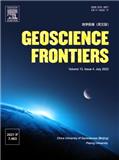| 投稿方式:官网投稿 |
- 栏目频次
- 单位占比
-
热词

高频栏目
中频栏目
低频栏目
-
更多
期刊简介
- 《地学前缘(英文版)》(Geoscience Frontiers)(双月刊),是2010年获国家新闻出版总署批准的新英文刊物,由中国地质大学(北京)、北京大学主办。办刊宗旨为:瞄准国际地学领域学科前沿,发表国内外地学前缘研究成果,探索地学前缘发展态势,为推动地学事业和加速我国现代化建设服务,诚邀国内外地学专家向 Geoscience Frontiers投稿。
-
基本信息
- 期刊名称:地学前缘(英文版)(Geoscience Frontiers)
- 主管单位:教育部
- 主办单位:中国地质大学(北京)、北京大学
- 国内刊号:CN 11-5920/P
- 国际刊号:ISSN 1674-9871;EISSN1674-9871
-
- 出刊日期:
- 期刊定价:
-
- 邮发代码:
-
- 所在省区:北京
- 邮政编码:
- 联系地址:
-
投稿信息
-
- 学科分类:天文地球科学
- 版面费用:待核实
-
- 字数要求:4000-52000
- 查重要求:-
-
- 复合因子:1.879
- 综合因子:1.247
-
- 审 稿 费:待核实
- 稿费:待核实
- 本刊可发:
- 特殊属性:第一批认定学术期刊,外文期刊
-
联系方式
- 投稿网址:https://www2.cloud.editorialmanager.com/gsf/default2.aspx
- 官网网址:http://www.geosciencefrontiers.com/
- 电话传真:010-82322283(202401期)
- 电子邮箱:geofrontier@cugb.edu.cn(202401期)
- 微信公众号:

